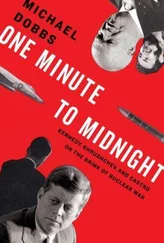Thanks to satellite technology, American military planners were able to observe a Soviet arms buildup that was unprecedented for peacetime. If anything, they underestimated the extent of the buildup, failing to detect many of the nuclear warheads that were rolling off Soviet production lines. There was something missing, however, from this bird’s-eye view: an understanding of ground-level reality.
Viewed up close, the Soviet military machine was neither as awesome nor as efficient as it appeared from the sky. The military-industrial complex suffered from the same weaknesses as the rest of the Soviet economy: incompetence, waste, technological backwardness, bureaucracy. Despite devoting an ever-increasing proportion of their country’s economic resources to the military, Soviet leaders still felt insecure.
Several years later, when the Cold War was already winding down, Soviet military chiefs presented their American counterparts with a map that reflected their view of the world. In sharp contrast with American maps, the Soviet map depicted a vast country encircled by enemies. To the east there were the Chinese, waiting for a chance to expand into the underpopulated vastness of Siberia. To the south, the Muslims, with whom Russia had waged war for five hundred years. To the west, the ideologically irreconcilable forces of imperialism. And all around, the rival superpower, with its military bases, electronic listening posts, subversive radio “voices,” and all-conquering consumer culture.
To defend themselves against these multiple threats, Kremlin leaders propagated the doctrine of a “sacred” border. The frontiers of the Soviet state had been consecrated with the blood of millions of soldiers and could never be altered. It was the patriotic duty of every citizen to defend these borders to the end. Half a million soldiers were assigned to patrol the frontier. Soviet air defenses alone consisted of some twenty-five hundred interceptor aircraft, five thousand early warning radar systems, and ten thousand surface-to-air-missiles, deployed along a five-thousand-mile arc from Kamchatka to Kaliningrad. 1
The orders were clear: “Use weapons and combat equipment” to destroy any intruder. When the test finally came, the border guards almost fluffed it.
GENNADY OSIPOVICH CLIMBED into the cockpit of his Su-15 interceptor jet an hour before dawn on September 1, 1983. He was given the coordinates of an unidentified “military” target approaching the island of Sakhalin from the direction of Kamchatka, a volcanic peninsula that juts down from the eastern tip of Russia. His mission was to destroy the target if and when it crossed back into Soviet airspace. At 5:42 a.m., Sakhalin time, he received the order to take off.
By the time Osipovich was finally airborne, the “intruder” plane had been wandering across Soviet territory for almost an hour. Four fighter planes had been scrambled over Kamchatka to bring it down, but they had lost touch with their target as it headed out over the Sea of Okhotsk. It later turned out that eight out of the eleven tracking stations on Kamchatka and Sakhalin were not functioning properly. 2
A veteran pilot with ten years’ experience in the Far East, Osipovich knew that the boastful talk about the Soviet Union’s impenetrable borders was a myth. In fact, there were gaping holes in the system. The Americans seemed to delight in testing the mettle of Soviet pilots. U.S. fighter aircraft would head directly for the border, only to veer away at the last moment. American RC-135 intelligence-gathering planes were constantly buzzing around. The war of nerves was taking its toll. Six months previously a squadron of planes from the U.S. Pacific fleet had brazenly violated Soviet airspace over the Kurile Islands, an archipelago seized from Japan at the end of World War II. A high-level commission had berated the Soviet pilots for their lack of vigilance. 3
Personal initiative was not a quality that was prized in the Air Defense Force (PVO). The Soviet top guns who flew high-performance combat planes sometimes dismissed their PVO colleagues as “robots” controlled from the ground. Osipovich’s Sukhoi-15 was a typical PVO plane, a cumbersome gas guzzler, fast-climbing but difficult to maneuver. One Soviet defector described it as little more than “a high-altitude missile platform.” 4The range of PVO planes was limited. After a Soviet fighter pilot flew a state-of-the-art MiG-25 to Japan, orders were issued to ensure that PVO planes never had enough fuel to reach a foreign airfield. That meant a maximum flying time of forty to fifty minutes, barely enough to complete a mission. 5
After roughly ten minutes’ flight Osipovich caught sight of the intruder through a thin layer of cloud. At first it looked like a flying dot, two to three centimeters across. The flashing navigation lights were clearly visible against the nighttime sky. When he got closer, to a distance of around three miles, he could observe the silhouette of a strange, humpbacked plane. It was large, unlike anything he had ever seen before.
At 6:15, Osipovich’s headphones crackled with an order to “prepare to fire.” Ground control on Sakhalin addressed him by the call sign 805 and asked if his missile systems were “locked on” to the target.
“I am locked on,” replied the pilot, watching a row of lights on his control panel beginning to flash. The interceptor was equipped with two R-98 air-to-air missiles. Upon release, one of the missiles was programmed to home in on a source of infrared radiation, such as aircraft exhaust. The other missile was guided to its target by radar. Attempting to get a little closer to the intruder, Osipovich turned on his afterburner. The radio crackled an order that he could not make out.
“Say again.”
The voice of ground control rose to a shout. “Eight-zero-five, the target has violated the state border, destroy the target!” 6
But there was to be a last-minute reprieve for KAL 007. Down on the ground, frantic messages were flying between air force bases on Sakhalin, a thousand-mile-long slither of starkly beautiful mountains rising from a plain that bristled with military installations. The duty officer for Osipovich’s squadron was startled by the extraordinarily “stupid” behavior of the intruder. Suicide missions were not the American style. He told a colleague from a neighboring fighter division that it all seemed “very suspicious.” “I don’t think the enemy is so stupid. Can it be one of ours?” Next, he called a control post at Makarov, on the eastern tip of the island, to check on the progress of the intruder.
“It hasn’t bombed us yet,” came the cheerful reply. 7
At the command control center in Khabarovsk, four hundred miles to the west, there were similar doubts about the identity of the “target.” The duty officer thought the intruder plane could be a passenger aircraft. “All necessary steps must be taken to identify it,” he insisted. His superior, General Kamenski, was also troubled. “Maybe it is some civilian aircraft, or God knows what,” he told the commander of air defenses on Sakhalin, General Kornukov.
“What civilian?” exploded Kornukov, who had been dragged out of bed forty-five minutes earlier and informed that an American RC-135 was heading straight toward his island. He knew the penalties for letting such a plane escape. “It has flown over Kamchatka. It came from the ocean, without identification. I am giving the order to attack.” 8
Seconds later even Kornukov began having some doubts. Straining to make sense out of the nocturnal drama, he countermanded his earlier order to shoot down the intruder. “Are there navigation lights or not?” he suddenly barked out. In the next minute he repeated the question five more times. The absence of navigation lights would be proof of the plane’s hostile intent. The question was relayed to Osipovich.
Читать дальше












